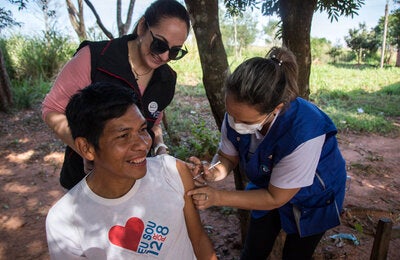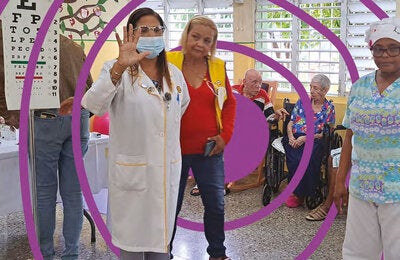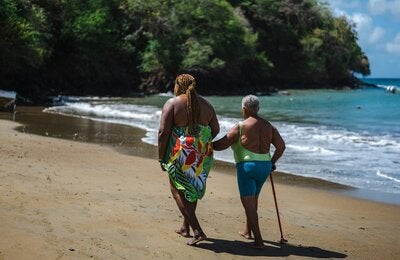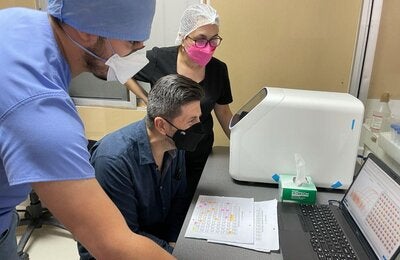The British Virgin Islands are a British Overseas Territory located in the northeastern Caribbean. They consist of some 50 islands, cays, rocky formations, and islets, with a total surface area of 59.3 mi.2. The largest islands are Tortola (21.5 mi.2), Anegada (15.2 mi.2), Virgin Gorda (8.5 mi.2), and Jost Van Dyke (3.2 mi.2).
2000 the total population of Virgin Islands (British) was 20 104 inhabitants; by 2023 this figure had risen to 31 538, representing a 56.9% increase. Regarding the country’s demographic profile, in 2023 people over 65 years of age accounted for 10.5% of the total population, an increase of 5.7 percentage points compared to the year 2000. In 2023, there were 107.5 women per 100 men and 76.8 older people (65 years or older) per 100 children under 15 years of age, as can be seen in the country’s population pyramids, distributed by age group and sex (Figure 1). Considering the population between 15 and 64 years of age to be potentially active (i.e., potential participants in the labor force), this group represented 75.8% of the total population of the country in 2023 (23 919 people). When we add these figures to the potentially passive population (4 311 under 15 years of age and 3 309 over 65 years of age), the result is a dependency ratio of 31.9 potentially passive people per 100 potentially active people. This ratio was 44.9 in 2000.
Life expectancy at birth in 2023 was 76.5 years, lower than the average for the Region of the Americas and 2.6 years higher that in 2000.
(Source: Health in the Americas+)








